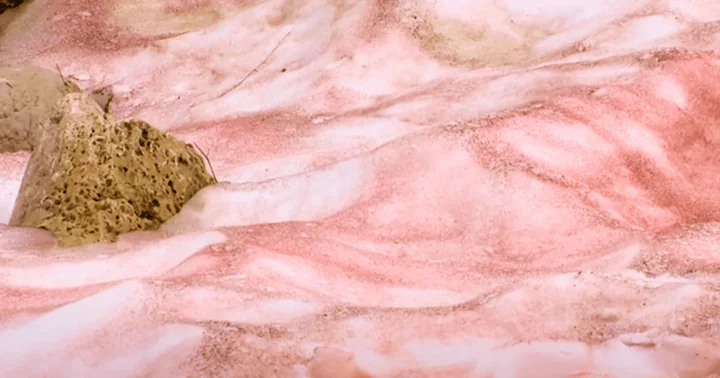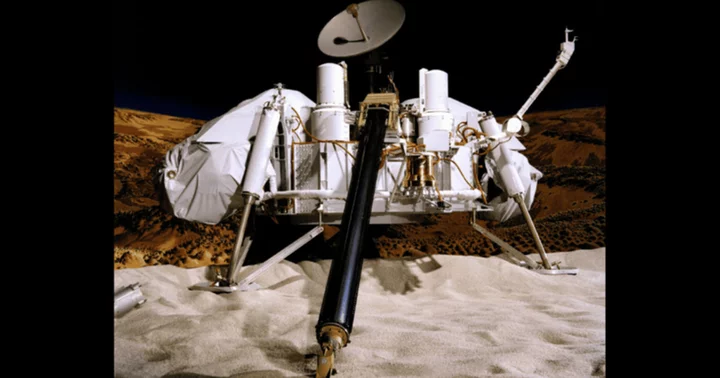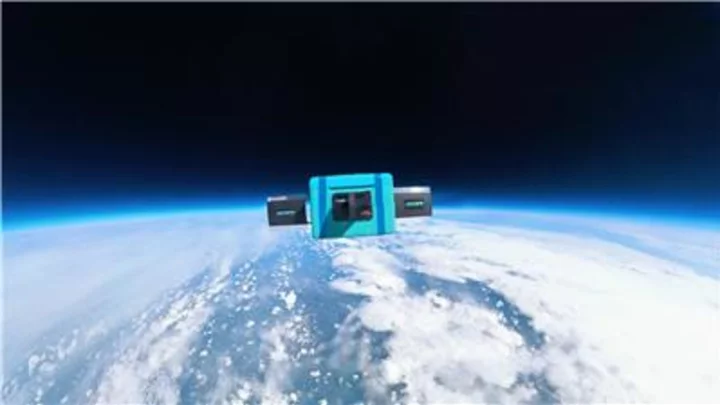SALT LAKE CITY, UTAH: High up in the mountains, where pinyon pine and quaking aspen trees create a breathtaking backdrop, a fascinating sight awaits those who venture into nature's embrace. Amid the lingering traces of winter's snow, an extraordinary transformation takes place, as hues of pink, purple, and orange emerge, painting the landscape with otherworldly beauty.
Hikers, campers, and church youth groups are often captivated by this phenomenon, reaching out and grasping the colored snow, likening its appearance to an array of familiar images. Some compare it to flavored snow cones, while others see resemblances to Flamin' Hot Cheetos, pink lemonade, or even dissolved blood. If one were to imagine an art project using red food coloring, it might closely resemble this surreal spectacle. At Tony Grove Lake in Utah's Logan Canyon, Jana Brough, a mother hiking with friends and family, described the experience. "It's almost like it's been sprinkled with Himalayan salt or even Kool-Aid powder. But when you scrape it, you can tell it's just on the surface," she told WTHR.
What Is watermelon snow?
This captivating display, known as "watermelon snow," owes its unofficial name to the pinkish tint that distinguishes it. The presence of this colored snow resulting from last winter's record snowfall has attracted the attention of curious visitors and triggered a host of questions about nature, health, and climate. Particularly noteworthy this summer is the widespread occurrence of watermelon snow in regions where, in drier years, the snow would have already melted from ridges and mountain ranges.
The phenomenon of technicolor snow can be observed in high-altitude environments worldwide, including the French Alps and Japan's Mountains of Dewa. It arises when a perfect combination of conditions aligns: optimal water content, abundant sunlight, suitable temperatures, and the presence of nutrients. These factors awaken dormant green algae known as Chlamydomonas nivalis, which thrives in cold temperatures. The algae swim to the surface of the snow, where they undergo blooming and division. When exposed to sunlight and ultraviolet rays, they undergo a color change, absorbing radiation to safeguard themselves from damage.
The algae's defense mechanism
Scott Hotaling, an ecologist specializing in biodiversity in cold and high-altitude environments at Utah State University, drew parallels between the algae's adaptation and human pigmentation. Just as human skin utilizes pigmentation to absorb ultraviolet radiation and protect against the sun, these algae produce a secondary pigment for a similar purpose—to shield themselves from the high levels of UV radiation in their environment. "They need some kind of pigmentation to prevent damage related to the high UV of the environment they're in. So they produce the secondary pigment largely for that purpose to protect themselves," explained Hotaling.
The presence of the algae poses little risk to human health or to animals encountering it as it melts into water, including cattle, dogs, or fish. However, despite its benign nature, the "watermelon snow" phenomenon accelerates the melting of snow, raising concerns about seasonal snowmelt patterns and the longevity of glaciers where the algae thrive. As the snow transitions into water, it nourishes the algae, but it also exposes the bare ground beneath, altering the balance between light reflection and absorption. Darker colors absorb more sunlight, causing snow banks and glaciers to melt more rapidly.
Environmental implications
This type of snow, therefore, causes changes in the magnitude and timing of snowmelt, which has significant implications for the Mountain West region. Ecosystems and species downstream that rely on cool water are affected, as are reservoirs designed to accommodate gradual snowmelt. In Arctic regions, glacier melt contributes to sea-level rise, threatening coastal areas and lakes with flooding. Alia Khan, a biogeochemist studying glaciers at Western Washington University, explained the consequences. "When we add light-absorbing particles that essentially darken the snow—like snow algae, black carbon, or dust—it reduces its ability to reflect solar radiation," she told the outlet.









